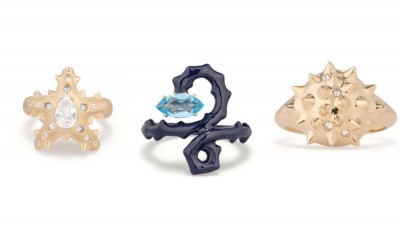Mergers and Acquisitions: The New Wave
International luxury groups have crossed the border, launching a “buying campaign” towards Italian "jewelry" that aims at verticalization. Manufacturing thus confirms its role as the driving force of Made in
The wave of supply chain transaction mergers in the luxury world has reached the jewelry sector. The French giants Lvmh and Kering, the latter with the Pomellato company, have recently strengthened their position in this regard, while Bruno Pavlovsky, President of Chanel's fashion division, has reiterated his interest in new made-in-Italy production partnerships, which could involve leather goods, footwear and, indeed, jewelry. The most recent acquisition saw the Lvmh Group take over the Pedemonte Group from the Equinox III SLP SIF investment fund last November. Founded in 2020 from the merger of several independent production workshops with decades of experience behind them, Pedemonte is now a recognized player in the manufacture of high-end jewelry with premises in Valenza and Valmadonna (Alessandria), as well as in Paris, with b2b realities - Vpa, Lombardi, Greco F.lli, Gieffedi and Thea, already consolidated partners of well-known international brands - and the b2c collections of the Vendorafa brand. This transaction (the economic terms have not been disclosed) enables the Watches & Jewelry division of Bernard Arnault's group (Bulgari, TAG Heuer, Tiffany & Co., Chaumet, Zenith, Fred and Hublot) to significantly increase its production capacity. Gian Andrea Garrone, Chairman and CEO of the Pedemonte Group, said: «This operation will allow us to strengthen our ambitions in terms of development, training and the growth of our human resources, the heart of our business. Combined with a robust investment policy to meet new challenges, especially those involving technology.» Again in November 2022, Sabina Belli, CEO of Pomellato, announced the launch of a long-term corporate partnership with Costanzo & Rizzetto, acquiring a minority stake in the capital of the Valenza-based jewelry company in order to strengthen its output levels. Costanzo & Rizzetto, which works for some of the biggest jewelry brands, employs about sixty people. The entire production cycle is integrated within its premises, combining craftsmanship and innovation. The company is best known for creating enamel jewelry, as it says on its website. «In recent months, the name of the game in the luxury industry seems to be to pursue more upstream integration,» explained Luca Solca, Senior Research Analyst, Global Luxury Goods at Bernstein. «The big companies in the sector are acquiring the best and most qualified subcontractors. This is a good thing for those who sell and for those who are employed. The big groups have significant resources and can pay well for both. The news is somewhat less positive for the Italian districts: the big groups’ buying campaign risks “sucking them dry” by reducing the resource expertise and know-how of the smaller brands. One only has to look at France, where districts no longer exist. There are instead, large ateliers belonging to the big brands.» Italy is, after all, the world's leading producer of luxury goods, thanks precisely to a first-class production fabric. «These transactions,» said Mario Ortelli, Managing Partner of Ortelli&Co, «should be seen in a positive light. By investing in the Italian supply chain, large international groups guarantee its continuity. In many cases, acquisitions are also accompanied by setting up schools and training courses, which hand down artisan professions and knowledge. And this contributes to protecting Italian know-how. On the other hand, it is clear how Italian companies in the sector have often failed to create appealing brands: manufacturing strength doesn’t often go hand in hand with the ability to create an expendable brand on the international market. It is therefore the upstream part of the supply chain that is tempting the big players, with a view to verticalization.»






